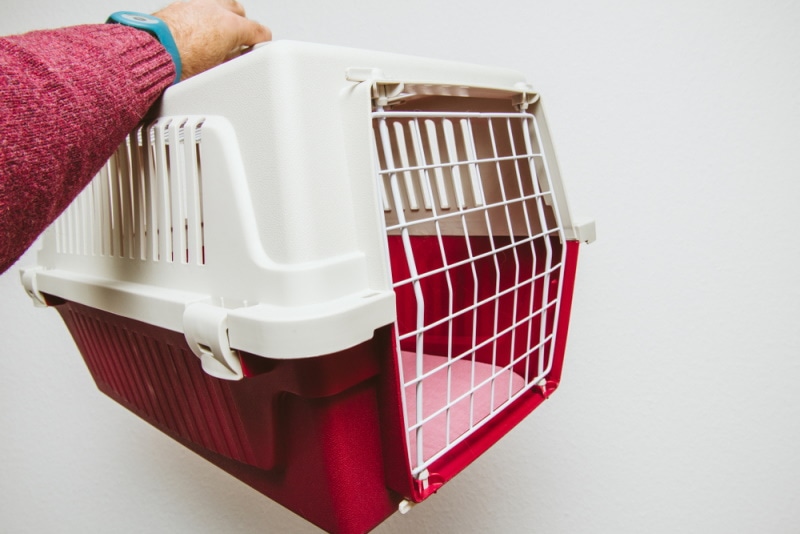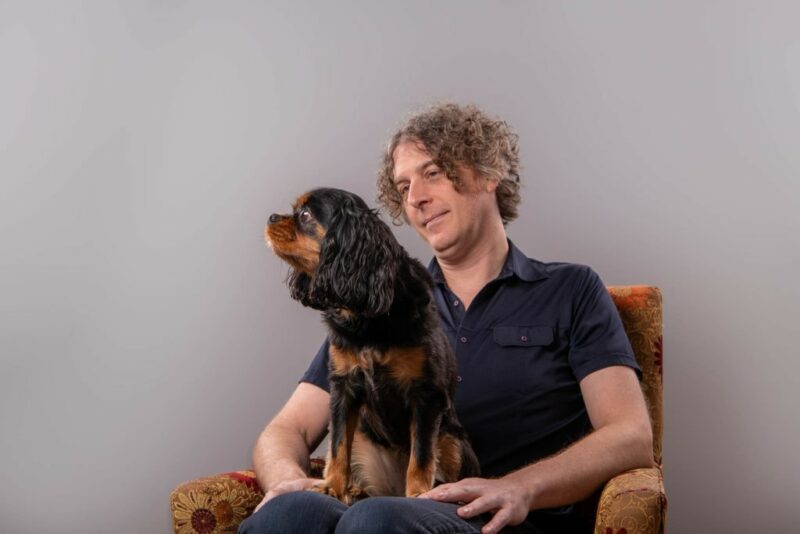Cavalier King Charles Spaniels are easygoing dogs and make wonderful companion pets for many first-time dog owners. When bringing home a new dog, it’s important to start training early so that it can build good habits and adjust more quickly to living its new life with you.
Crate training is an invaluable part of many dogs’ training. Crates can help keep dogs in a safe space, and you don’t have to worry about them getting themselves in a dangerous situation while you’re away.
Cavalier King Charles Spaniels can form very strong attachments with people and often dislike being away from them. So, while they’re relatively eager to please and easy to train, crate training can still be particularly challenging. Here are some steps you can take to ensure your Cavalier King Charles Spaniel is crate trained.
Before You Begin: Setting Up the Crate
There are a few key things to remember before you start crate training your Cavalier King Charles Spaniel. First, you’ll want to purchase the correct crate size. Finding the right crate size will help your dog feel comfortable and safe while you’re away. You can accomplish this by measuring your dog’s standing height and length. After you get these measurements, all you have to do is add 6 inches to them.
If you have a growing puppy, you can purchase a crate with a divider. Then, you can portion out the crate and increase its size as the puppy grows.
Lastly, crate training can take a few weeks for puppies to learn, and it’s important not to leave your puppy alone in a crate if it’s not ready. This will only make crate training more difficult and can cause unnecessary distress on your puppy. So, make sure to create enough space for crate training in your schedule.

The 5 Easy Steps to Crate Train a Cavalier King Charles Spaniel
1. Introduce Your Cavalier King Charles Spaniel to the Crate
Allow your puppy to explore the crate with the door open. You can add a comfortable mat, a few treats, and a piece of clothing or a blanket with your scent on it. Your Cavalier King Charles Spaniel is going to need some time to get used to the crate and develop positive associations with it.
If your puppy happens to be food-motivated, you can toss some treats first near the door and gradually progress to placing them deeper inside the crate and encourage your puppy to go inside. Just make sure not to close the crate door yet.

2. Have Your Cavalier King Charles Spaniel Eat Meals in the Crate
Feeding meals and keeping a water bowl inside the crate can also help your puppy get used to being inside it faster. If your puppy feels hesitant about going inside to eat, you can place the food bowl just outside the entrance so that your puppy can eat without completely entering the crate. Slowly move the food bowl further into the crate in small increments until your puppy feels completely comfortable inside the crate.
Once your puppy is completely comfortable eating inside the crate, you can start to close the crate door. When you first do this, only keep the door shut while your puppy’s eating and open it as soon as your puppy’s done with its food. As your puppy gets used to the door being shut, you can start to increase the amount of time the crate’s closed after it finishes eating. Work your way towards being able to have your puppy stay in the crate for at least 10 minutes without whining.
3. Start with Short Crate Periods
Once your Cavalier King Charles Spaniel can eat in its crate and wait without whining, you can start to have it enter the crate outside of mealtimes. Start by encouraging your puppy to go in the crate with a treat or its favorite toy. Keep the door shut for just a couple of minutes. Then, open the door and give your dog praise and a treat.
Do this multiple times a day until your puppy consistently stays in its crate without whining. You can also start to step away from the crate and temporarily go into a different room to get your Cavalier King Charles Spaniel used to not seeing you. This step alone can take several weeks to accomplish.

4. Lengthen the Crate Periods
Slowly start to increase the amount of time your Cavalier King Charles Spaniel is inside the crate and work your way up to getting your puppy used to spending 30 minutes inside. A helpful tool in this phase is a long-lasting treat dispensing toy. Freezing a kong toy with peanut butter is a great way to make the toy last longer.
5. Go Out on Short Trips
After your puppy can stay in the crate for 30 minutes without any problems, you can start to go out of the house for short errands. Try not to be out for longer than 30 minutes during the beginning of this phase.
Before you leave the house, make sure that your puppy has gone to the bathroom. Don’t try to make a big deal out of leaving the house. Be calm and leave your dog with a treat when it goes inside the crate.
You can slowly start to increase the number of minutes you spend outside. Remember that puppies shouldn’t be left in crates for more than 3 hours because they can’t wait very long to relieve themselves. Adult dogs shouldn’t be inside crates for more than 8 hours at a time.
In Conclusion
Crate training a Cavalier King Charles Spaniel can start out difficult, but once you start implementing it, it’ll get easier over time. Just make sure to work at a pace that’s comfortable for your puppy. It may take several weeks or a couple of months. However, once your puppy gets the hang of it, it’ll have a safe space to retreat to at any time, and you won’t have to worry about getting it into trouble while you’re outside of the house.
Featured Image Credit: Page Light Studios, Shutterstock
Contents
- Before You Begin: Setting Up the Crate
- The 5 Easy Steps to Crate Train a Cavalier King Charles Spaniel
- 1. Introduce Your Cavalier King Charles Spaniel to the Crate
- 2. Have Your Cavalier King Charles Spaniel Eat Meals in the Crate
- 3. Start with Short Crate Periods
- 4. Lengthen the Crate Periods
- 5. Go Out on Short Trips
- In Conclusion












